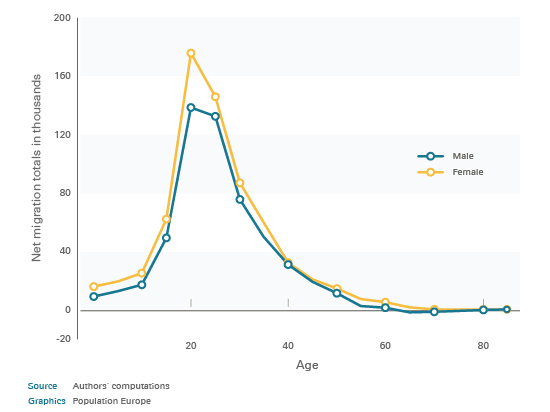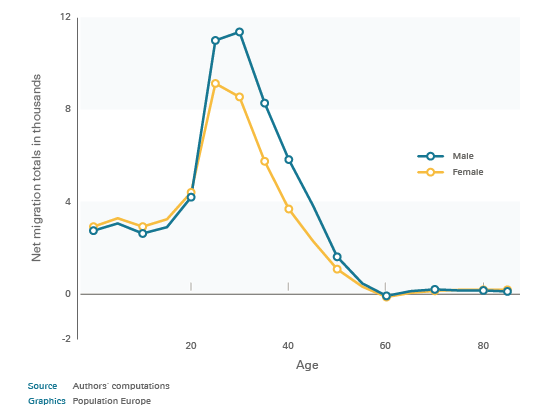James Raymer, Joop de Beer and Rob van der Erf have developed a new method for estimating migration flows within all 31 countries in the European Union (EU) and the European Free Trade Association (EFTA) from 2002 to 2007. Having the correct data on migration flows is essential if, for example, a country expects that immigration could solve certain problems, such as a shrinking workforce or the financing of pension systems. They are also necessary for politicians developing integration policies.
Difficulties achieving comparable data
The existing data are incomplete and not very precise. European countries have historically developed registration systems, which are rarely compatible. It starts with the question of who counts as a migrant. In this respect the European countries use different definitions. Another problem is that countries may have relatively precise data for immigrants but not for emigrants, as people are obliged to register when they move in but not when they move out. To illustrate this: In 2003, Germany counted 9258 immigrants from the Czech Republic, whereas the Czech Republic just reported 950 people leaving their country for Germany. There are also other countries with partially or even completely missing data.
Putting the pieces of the puzzle together
The European Parliament passed a regulation in 2007 to harmonise the population data of EU countries. However countries do not have to change their data collection systems completely. Statistical methods can be used to complete missing data and make them comparable. To put this method into practise, the researchers used data from three sources: A previously harmonised origin-destination table amongst 19 EU/EFTA countries, an incomplete table with details about age and sex, and additional information about migration in general. To determine better estimates for inconsistent immigration and emigration values they also weighted the data: Richer countries are more likely to be attractive for immigrants, whereas younger populations are more likely to be mobile than older ones.
New insights about total number, age and sex of migrants
The results of the new estimation method yield new insights about movement in and out of the EU/EFTA countries. For example the net migration, which is the difference between the number of people moving into a country and the number moving out, is considerably lower than that given by the European Statistical Office EUROSTAT. For instance, the research team estimates a net migration of approximately 864,000 in 2007 for the EU/EFTA countries whereas EUROSTAT reports 2,089,000.

Figure 1: Estimated net migration totals for EU15
Another interesting result shows the estimation of net migration by sex and age. As figure 1 shows, there is a large number of young, mainly female migrants between 20 and 29 moving into the fifteen older member states (EU15).

Figure 2: Estimated net migration totals for EFTA
Also the EFTA countries Iceland, Lichtenstein, Norway and Switzerland, have a positive net migration balance, but compared to the EU15 they are between 25 and 59 years of age and thus slightly older (see figure 2). Moreover there are more male than female migrants remaining in the EFTA countries. Both the EU15 and the EFTA have a positive balance, whereas countries which joined the EU late in 2004 and 2007 had overall negative net migration, having lost young people.
The researchers believe that their methodology produces better and more comparable estimates of migration flows than are currently available.
This PopDigest is also available in French, Spanish and German.
This volume has been published with financial support of the European Union in the framework of Population Europe.